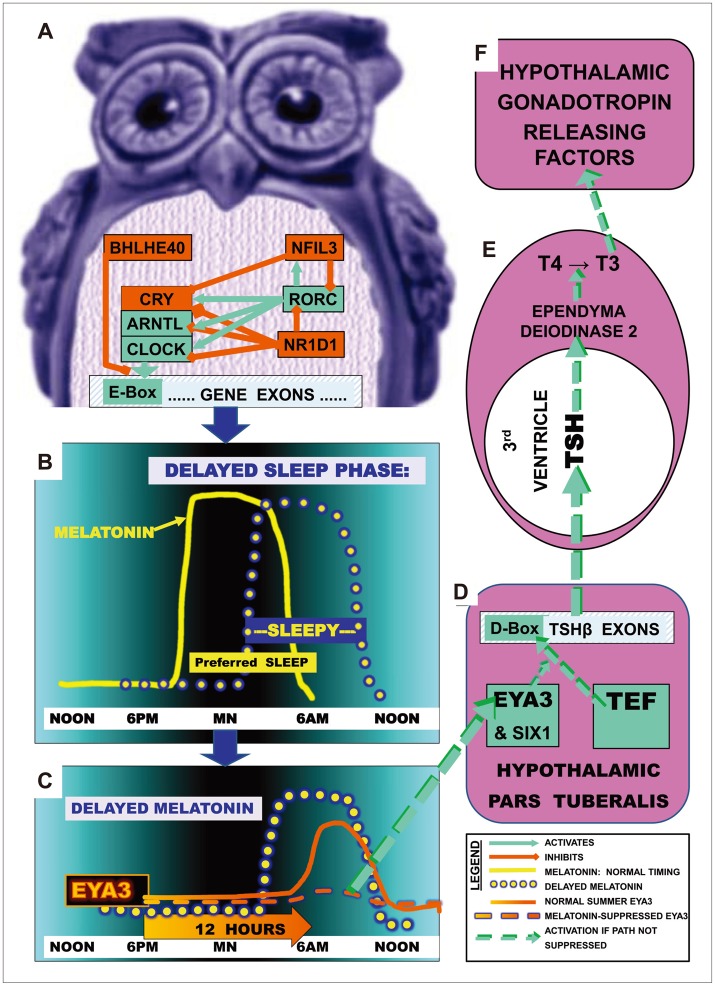Figure 10.
Mechanisms by which DSPS-associated SNPs might lead to photoperiodic disturbances. A: Part of the circadian gene network is shown which promotes transcription through pathways leading to E-box activation (green) or which deactivates transcription and E-box promoter action (red). B: The yellow line illustrates normal melatonin secretion commencing shortly before the preferred nocturnal sleep time and terminating about the time of awakening near dawn, so that preferred sleep times and sleepiness normally correspond. The yellow dotted line illustrates how in DSPS, melatonin secretion may become delayed, consequently delaying sleepiness. C: The gene EYA3 reaches a sharp peak in pars tuberalis transcription about 12 hours after darkness onset (solid orange line), but if melatonin is still elevated (in winter or DSPS), the EYA3 peak is largely suppressed (dashed orange line).81 D: After short nights in summer, EYA3 and SIX1 coactivate TEF at a D-box on the TSHβ promoter. TSHβ hybridizes with TSHα, releasing active TSH into 3rd ventricle CSF.81 E: TSH circulates retrograde to promote deiodinase 2 which converts T4 to T3. F: T3 promotes synthesis and release of gonadotropin hormones, implementing summer reproduction and good mood.

